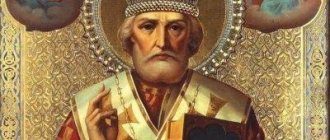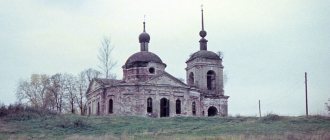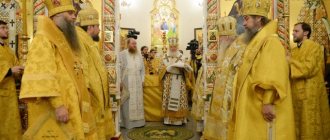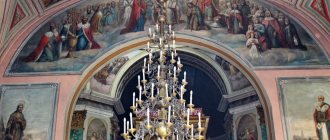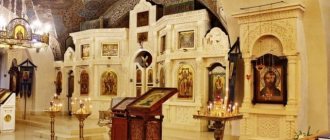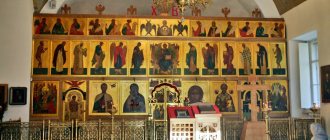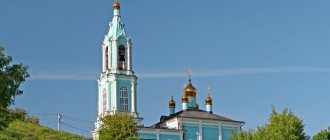Mir
Russia Moscow Church of St. Nicholas in Tolmachi (Moscow) Map is loading...
{"format":"leaflet","minzoom":false,"maxzoom":false,"limit":50,"offset":0,"link":"all","sort":[""], "order":[],"headers":"show","mainlabel":"","intro":"","outro":"","searchlabel":"\u2026 \u0441\u043b\u0435\ u0434\u0443\u044e\u0449\u0438\u0435 \u0440\u0435\u0437\u0443\u043b\u044c\u0442\u0430\u0442\u044b","default":"","import-annotation":false,"width ":"auto","height":"350px","centre":{"text":"","title":"""link":"""lat":55.74074999999999846522769075818359851837158203125,"lon": 37.62028000000000105274011730216443538665771484375,"icon":""},"title":"","label":"","icon":"","lines":[],"polygons":[],"circles":[ ],"rectangles":[],"copycoords":false,"static":false,"zoom":8,"defzoom":14,"layers":["OpenStreetMap"],"image layers":[] ,"overlays":[],"resizable":false,"fullscreen":true,"scrollwheelzoom":true,"cluster":false,"clustermaxzoom":9,"clusterzoomonclick":true,"clustermaxradius":80, "clusterspiderfy":true,"geojson":"","clicktarget":"","showtitle":true,"hidenamespace":false,"template":"","userparam":"","activeicon": "","pagelabel":false,"ajaxcoordproperty":"","ajaxquery":"","locations":[{"text":"\u003Cb\u003E\u003Ca href=\"/palomnik/%D0% A5%D1%80%D0%B0%D0%BC_%D0%A1%D0%B2%D1%8F%D1%82%D0%B8%D1%82%D0%B5%D0%BB%D1%8F_% D0%9D%D0%B8%D0%BA%D0%BE%D0%BB%D0%B0%D1%8F_%D0%B2_%D0%A2%D0%BE%D0%BB%D0%BC%D0% B0%D1%87%D0%B0%D1%85_(%D0%9C%D0%BE%D1%81%D0%BA%D0%B2%D0%B0)\» title=\»\u0425\u0440\ u0430\u043c \u0421\u0432\u044f\u0442\u0438\u0442\u0435\u043b\u044f \u041d\u0438\u043a\u043e\u043b\u0430\u044f \u0432 \u0422\ u043e\u043b\u043c\u0430\u0447\ u0430\u0445 (\u041c\u043e\u0441\u043a\u0432\u0430)\»\u003E\u0425\u0440\u0430\u043c \u0421\u0432\u044f\u0442\u0438\u0442\u0435 \u043b\u044f \u041d\ u0438\u043a\u043e\u043b\u0430\u044f \u0432 \u0422\u043e\u043b\u043c\u0430\u0447\u0430\u0445 (\u041c\u043e\u0441\u043a\u0432\u 0430)\u003C/a\u003E\ u003C/b\u003E\u003Chr /\u003E\u003Ca href=\"/palomnik/%D0%A1%D0%B2%D0%BE%D0%B9%D1%81%D1%82%D0%B2%D0% BE:%D0%90%D0%BD%D0%BD%D0%BE%D1%82%D0%B0%D1%86%D0%B8%D1%8F\» title=\»\u0421\u0432\u043e \u0439\u0441\u0442\u0432\u043e:\u0410\u043d\u043d\u043e\u0442\u0430\u0446\u0438\u044f\»\u003E\u0410\u043d\u043d\u043e\u0442 \u0430\u0446\u0438\ u044f\u003C/a\u003E: »'\u0425\u0440\u0430\u043c \u0441\u0432\u044f\u0442\u0438\u0442\u0435\u043b\u044f \u041d\u0438\u043a\u0 43e\u043b\u0430\u044f '' 0432\u0417\u0430\u043c\ u043e\u0441\u043a\u0432\u043e\u0440\u0435\u0447\u044c\u0435, \u0434\u043e\u043c\u043e\u0432\u0430\u044f \u0446\u0435\u0440\u 043a\u043e\u0432\u044c\u043f \u0440\u0438 \u0422\u0440\u0435\u0442\u044c\u044f\u043a\u043e\u0432\u0441\u043a\u043e\u0439 \u0433\u0430\u043b\u0435\u0440\ u0435\u0435,\u043f\u043e\ u0441\u0442\u043e\u044f\u043d\u043d\u043e\u0435 \u043c\u0435\u0441\u0442\u043e\u043d\u0430\u0445\u043e\u0436\u0434\u0435\u04 3d\u0438\u0435\u0438\u043a\ u043e\u043d\u044b \u0412\u043b\u0430\u0434\u0438\u043c\u0438\u0440\u0441\u043a\u043e\u0439 \u0411\u043e\u0433\u043e\u043c\u0 430\u0442\u0435\u0440\u0438, \u0438 \u0432\u0440\u0435\u043c\u0435\u043d\u043d\u043e\u0435 (\u043d\u0430 \u043f\u0440\u0430\u0437\u0434\u043d\u0438\u043a \u0421\u0432\u044f\u0442\ u043e\u0439 \u0422\u0440\u043e\u0438\u0446\u044b) \u2014 \u00ab\u0422\u0440\u043e\u0438\u0446\u044b\u00bb \u0410\u043d\u0434\u 0440\u0435\u044f\u0420\u0443 \u0431\u043b\u0451\u0432\u0430.","title":"\u0425\u0440\u0430\u043c \u0421\u0432\u044f\u0442\u0438\u0442\u0435\u043b\u044f\u041d \u0438\u043a ""link": »»» lat":55.74074999999999846522769075818359851837158203125,"lon":37.62028000000000105274011730216443538665771484375,"icon":""}],"imageLay ers":[]}
55.740771; 37.620339
Russia, Moscow, Maly Tolmachevsky Lane, 9
Moscow
Russia
Telephone:
Church of St. Nicholas in Tolmachi
- a temple-museum in Zamoskvorechye, a house church at the Tretyakov Gallery, the permanent location of the icon of Our Lady of Vladimir, and temporary (on the feast of the Holy Trinity) - “Trinity” by Andrei Rublev.
History[edit]
1625: The first mention of the wooden “Church of the Great Wonderworker St. Nicholas, and in the limit of Ivan the Baptist, which is beyond the Moscow River in Tolmachi” was found in the Parish Book of the Patriarchal Prikaz.
1697: a stone church was erected, its author was the “guest” Longin Dobrynin, a parishioner of the Church of the Resurrection in Kadashi. The main altar of the temple was consecrated in honor of the Descent of the Holy Spirit, and Nikolsky was moved to the refectory.
1882
From 1697 to 1770 The church in business papers and books was called “Soshestvenskaya”, and then began to be registered again as “Nikolaevskaya”.
1770: the Pokrovsky chapel was built in the refectory at the expense of the widow of the merchant of the 1st guild I. M. Demidov
1834: the refectory was rebuilt according to the design of the architect F. M. Shestakov at the request of parishioners and “in accordance with the thoughts of Metropolitan Philaret,” and a new bell tower was erected.
1856: the quadrangle was renewed and the main altar was rebuilt. Funds for the renovation of the temple were also donated by Alexandra Danilovna Tretyakova and her sons.
1929: the temple is closed
1993: services resumed
On September 8, 1996, the main altar of the temple was consecrated by His Holiness Patriarch Alexy II of Moscow and All Rus'.
1997: reconstruction was completed (the slender bell tower was re-erected and the five-domed quadrangle was restored. Three iconostases, wall icon cases were recreated, and wall paintings were completely restored).
In 1697, 2 merchants built a single-limit church in honor of St. Nicholas
In 1697, 2 merchants, son and father, decided to build a single-department church in honor of St. Nicholas the Wonderworker. In 1770, many sources indicate him as Soshestvensky.
In 1770, the Intercession Limit was built in the refectory church of St. Nicholas. The widow of the merchant of the first guild, Demidov, helped with this. She allocated the necessary funds for the construction of the chapel.
In 1812, during Napoleon's attack, miraculously the Church of St. Nicholas remained untouched. Photo: hramvtolmachah.ru
In 1812, as many know, there was a war. During Napoleon's invasion, a real miracle was shown to the temple. During the fire, all the surrounding buildings were destroyed by fire, but the Church of St. Nicholas miraculously remained undamaged.
It was there that local residents took refuge from smoke and fire. Then the property of the temple, which was securely hidden under the floor, also survived completely. But while defending the temple, priest John Andreev fell as a martyr.
1812
this year, in Moscow, burned by Napoleon, the St. Nicholas Church miraculously remained intact and sheltered residents from the fire
Napoleon's captors tortured him to find out where he hid the church treasures, but after the victory he died from his injuries. According to another version, it is stated that he was killed on the porch and buried in the fence of the temple.
Many still cannot understand how such a miracle could happen. But, unfortunately, it was still desecrated by the French.
Current state[edit]
Today the temple has the status of a house church at the State Tretyakov Gallery. All the necessary conditions have been created here for storing unique shrines, which are the spiritual and cultural heritage of our people.
Once a year, on the feast of the Holy Trinity, Andrei Rublev’s “Trinity” icon is brought from the halls of the Tretyakov Gallery to the temple.
Description[edit]
The temple is historically represented by a quadrangle of the 17th century with a central altar of the descent of the Holy Spirit on the Apostles and a bell tower with a refectory of the 19th century, including two chapels - Pokrovsky and Nikolsky.
In 1834, a new bell tower was built near the temple in Tolmachi
In 1832, the bell tower of the church in Tolmachi became severely askew, and the refectory suffered small but significant cracks.
In the same year, with the blessing of St. Philaret, Metropolitan of Moscow and All Rus', at the expense of parishioners, a new 3-tier bell tower and a refectory with two symmetrical boundaries were laid and illuminated. This happened on November 25, 1834.
A new dome was cast on the 2nd tier of the bell tower, but the rest of the bells were left the same.
Interior decoration of the Church of St. Nicholas today. Photo: mukckd.ru
It is worth paying attention to the interior decoration of the temple. The bell tower was made of artificial marble. By 1845, even most of it had been lost, and so the decoration was later replaced by painting.
The rector of the temple, Nikolai Romanov, was responsible for the splendor and all restoration work. In 1849, it was he who was appointed spiritual clergyman of the Zamoskvoretsky forty.
1849
this year Nikolai Romanov was appointed spiritual priest of the Zamoskvoretsky Forty
Saints[edit]
- St. Alexy Zosimovsky, who served in the church as a deacon for 28 years, canonized by the Council of Bishops in August 2000;
- svschmch. Ilya Chetverukhin, the last rector of the temple before its closure in 1929, canonized by the decision of the Holy Synod in 2002;
- martyr Nikolai Rein, a former parishioner of the temple.
In 1929, the temple in Tolmachi was closed
The 20th century was one of the turning points for many temples and churches. In 1922, 157 kg of gold and silver items were confiscated from the temple, after which the church was closed in 1929.
After closing, the temple stood empty and disfigured for a very long time. The Tretyakov Gallery was located in its building. Everything inside was redone and divided into several floors, which served as the museum's depository.
1929
this year the church was closed, the Tretyakov Gallery was located in its premises
Only the 1st floor was a little reminiscent of the very temple where people came to pray for the Divine Liturgy.
The Tretyakov Gallery first began a major restoration to restore the temple building. They wanted to open a concert hall in it. In 1990, the heads of the church bell tower were installed.
In 1990, priest Nikolai Sokolov received a decree for the Church of St. Nicholas in Tolmachi, which was given the status of a house church at the Tretyakov Gallery. It was from that moment that St. Nicholas Church became the first church-museum in Russia.
Currently, in the church in Tolmachi there is a miraculous icon of the Vladimir Mother of God
Before the official restoration, the divine liturgy was celebrated in the main chapel. All the icons that are in the temple are surviving images from various Moscow and other Russian churches.
There are very few native temple icons - this is the icon of St. Nicholas and the heavenly row of icons. Over time, the painting of the temple was also restored. The first service took place on the day of “Winter St. Nicholas” on December 19.
How to get there[edit]
Address:
Moscow, Maly Tolmachevsky Lane, building 9 (entrance through the Tretyakov Gallery building, located to the left of the temple building)
Telephone:
Directions:
- From the Tretyakovskaya metro station - from the passage to the left, cross Bolshaya Ordynka Street and walk along B. Tolmachevsky Lane to the intersection with Maly Tolmachevsky Lane. Entrance to the temple is through the Gallery building next to the Temple building.
- From the Polyanka metro station - from the passage to the left, cross Bolshaya Polyanka Street and go to house 13, after which turn right into the alley, then along B. Tolmachevsky Lane to the intersection with Maly Tolmachevsky Lane. Entrance to the temple is through the Gallery building next to the Temple building.
Email:
Website:
https://hramvtolmachah.ru/
The Tretyakov family played a major role in the life of St. Nicholas Church
In 1851, the Tretyakov family came to Lavrushinsky Lane. And in the early 60s, Countess Maria Fedorovna Sologub came to the Demidovs’ estate. It was thanks to the people who came here that St. Nicholas Church received the necessary help and support.
The Tretyakov family. Photo: hramvtolmachah.ru
The central part of the altar was rebuilt at Tretyakov’s expense. A new five-tier gilded iconostasis was also made. It is worth noting that the composition of many paintings has survived even to this day.
Many famous people began to come to the temple in Tolmachi. Tretyakov himself attended festive liturgies, and was very upset if one of the employees of private galleries was absent from the divine liturgy.
It is also worth noting that Maria Fedorovna Sologub, who bought the Demidovs’ estate in the early 60s, also made considerable efforts.
At this time, many relatives and friends came to visit her, who also contributed to the development of Christian philosophy, which was based on deep roots in the traditions of the church.
The magazine Soulful Reading, which was organized by confessors from St. Nicholas Church in Tolmachi. Photo: hramvtolmachah.ru
In 1860, the rector of the church, Father Vasily, together with priest Alexei and Vasily Lebedev, founded the magazine Soulful Reading. Deacon Fyodor Solovyov, who in the future became a famous elder, also helped in this activity.
Since he was widowed at an early age, he directed all his spiritual forces to the development of Christian enlightenment. In 1770, he even published his book, where he tells the history of the temple.
Pilgrim[edit]
During liturgical times, the temple is open to all believers, and at other times it is open as a hall of the Tretyakov Gallery, to which museum visitors come to become familiar with church art, and often return again, but not as a temple of art, but as a temple of God .
During services, you can enter the temple-museum through the first door to the left of the bell tower, in the building of the Tretyakov Gallery. Before climbing the stairs to the temple, you must leave your outerwear in the wardrobe.
The temple is open to gallery visitors every day, except Mondays, from 12 00 to 16 00. Entrance is through the central entrance of the Tretyakov Gallery.
Library
open:
- on Sundays – after the Divine Liturgy until 14:00
- on Saturdays – from 15:30 to 17:00
Schedule of services:
On Saturdays and Sundays, as well as on the days of the twelve and great holidays - The Divine Liturgy begins at 9.00, on the eve of the All-Night Vigil at 17.00.
On Friday at 17.00 there is an akathist to the Vladimir Icon of the Mother of God (except for the days of Great Lent and the after-feast of the Twelve Feasts), on Wednesday at 10.00 there is a prayer service alternately to the Vladimir Icon of the Mother of God and the Iveron Icon of the Mother of God.
On days of especially revered saints and icons of the Mother of God - Matins and Divine Liturgy at 8.00
Schedule of services for the month
After Napoleon's invasion there were no services in St. Nicholas Church
About 5 months after the invasion of Napoleon's troops, there were no divine liturgies in the St. Nicholas Church. It was completely empty, and had lost its parish. At that time, not a single house survived in the area.
In 1813, Nikolai Yakovlev became the priest of the Church of St. Nicholas in Tolmachi.
A little later, the Nikolsky and Pokrovsky limits were illuminated. But since there were no people, the temple was assigned to the Church of St. Gregory of Neocaesarea. At that time, the Tolmachevo people were very upset; they submitted a petition to the Reverend Augustine asking him to return the temple.
Church of St. Gregory of Neocaesarea in Polyanka at present. It was to this temple that the Church of St. Nicholas in Tolmachi was assigned. Photo: pastvu.com
Local residents were even ready to pay any amount for the maintenance of the clergy, if only the parish church received its primitive essence.
This case was set in motion, and later it turned out that the Church of St. Gregory had even fewer parishioners than the St. Nicholas Church, which was perfectly preserved after the war, had at that time.
On February 5, 1814, a decree was issued to restore the independence of some churches.
The Church of St. Nicholas was also included here. This is how the parishioners, albeit in small numbers, defended their temple in Tolmachi.
Gradually the temple began to come to life, and the area around it began to develop. Merchants, industrialists and wealthy parishioners built here. At that time, stone houses began to be built.
As of the 19th century, all houses were completely rebuilt on Tolmachevsky Lane. It is also surprising that some houses have survived to this day.
